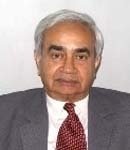Pokharan II: The way forward
21 May, 1998 · 94
P. R. Chari looks into the way forward available in the aftermath of Pokhran II
The hiatus between the developed nations and
India
is presently complete.
Australia
represents the maximalist position. Its Foreign Minister announced, "
India
must immediately sign the CTBT, join the international nuclear non-proliferation regime and forswear the use of nuclear weapons".
India
has indicated that it would "be prepared to consider being an adherent to some of the undertakings in the CTBT" under certain conditions, and participate in negotiations to finalise the FMCT. Karl Inderfurth has described these assurances in Senate testimony to be "far short of indicating any meaningful commitment to either accord". In any case, the sanctions mandated by US laws will become applicable upon
India
. Is any meeting ground possible, therefore, between
India
and the
United States
?
India
’s Prime Minister has not disclosed the conditions that are to be met before
India
would enter the CTBT, claiming that these need negotiation. They might include non-CTBT conditionalities like prior lifting of sanctions or gaining Permanent Membership of the Security Council. But
India
’s subsequent gestures require highlighting. First,
India
has declared that its five nuclear tests conclude this series. Second, it has clarified that these tests establish
India
’s capacity to weaponize its nuclear option, but it has not yet deployed nuclear weapons. Third, it is willing to consider making a no-first-use declaration, although holding that it would only be applicable in specified circumstances has created some avoidable confusion. A window of opportunity exists therefore for an Indo-US dialogue.
India
’s objections to the CTBT’s language included the following dissatisfactions:
India
’s objections that these tests violated the spirit, if not the letter, of the CTBT were arguable propositions.
India
cannot press these objections now after having shown its capability to conduct "sub-critical" tests.
India
’s extended objections here were that the nuclear weapon powers did not agree to include a time schedule in the Treaty for the elimination of nuclear weapons. This proposition can be argued for and against. It can indubitably be held that a time-schedule is essential to bind the nuclear weapon powers to the prescribed goal of nuclear disarmament. But it could also be urged that this time schedule is extraneous to halting further nuclear testing, which is the basic purpose of the Treaty. This problem is not irresoluble. The consecrated goal of eventual nuclear disarmament, incidentally, is not unacceptable to either the
United States
or the other nuclear weapon powers. Or, for that matter, to
India
. A Protocol could be attached to the Treaty envisaging discussions on the elimination of nuclear weapons in another forum. Consequently, this question could be included in the suggested Indo-US dialogue.
India
would not weaponize its demonstrated nuclear capability: the nuclear weapon powers would proceed steadily towards eliminating their nuclear weapons. In other words,
India
would observe a moratoria on further testing and weaponizing its nuclear capabilities, whilst the nuclear weapon powers would proceed steadily to hasten nuclear disarmament. This goal is clearly mentioned in the text of the NPT and the CTBT. Greater earnestness should be demonstrated towards its achievement by all concerned.
India
had criticised the pressures generated by the CTBT’s "entry-into-force" clause. It was suddenly changed in mid-1996 during the CTBT negotiations. In brief, this clause now requires 44 listed countries that "were participating members of the CD and possess nuclear research or nuclear power reactors" to compulsorily join and ratify the CTBT before it can become operational. This includes
India
, which believed that this mandatory clause infringed its national sovereignty. Should its major substantive condition—progress towards elimination of nuclear weapons—be met, this clause need not obstruct
India
’s entry into the CTBT.
India
’s current fissile material stocks hold that it has the capability to manufacture a fair-sized inventory of nuclear weapons. It can, therefore, immediately declare a moratorium on further fissile materials production for military purposes. There is no reason also for
India
to non-cooperate in drafting this Treaty, if a modality to seek the elimination of nuclear weapons in a definite time frame is placed in position.
India
joining the CTBT, entering negotiations on the FMCT, and seeking a process for the elimination of nuclear weapons should be inscribed on the agenda of an extended Indo-US dialogue. The present extreme positions adopted by both countries are clearly maximalist negotiating positions. But negotiations are all about compromises.
· Firstly, the Treaty was not truly comprehensive since it permitted "sub-critical" tests to refine future weapon designs. Tests of the " hydronuclear" genre need being conducted in field sites on safety considerations. But "hydrodynamic" tests and computer simulation exercises can be carried out in laboratories. They are consequently unverifiable.
· Secondly, the Treaty was a non-proliferation but not a disarmament measure.
A "grand bargain" can be visualised.
· Thirdly,
Coming to the FMCT these are early days yet. The precise contours of this Treaty are not yet visible. So much is clear. Most estimates of
In brief, a way forward is available. The three issues of


